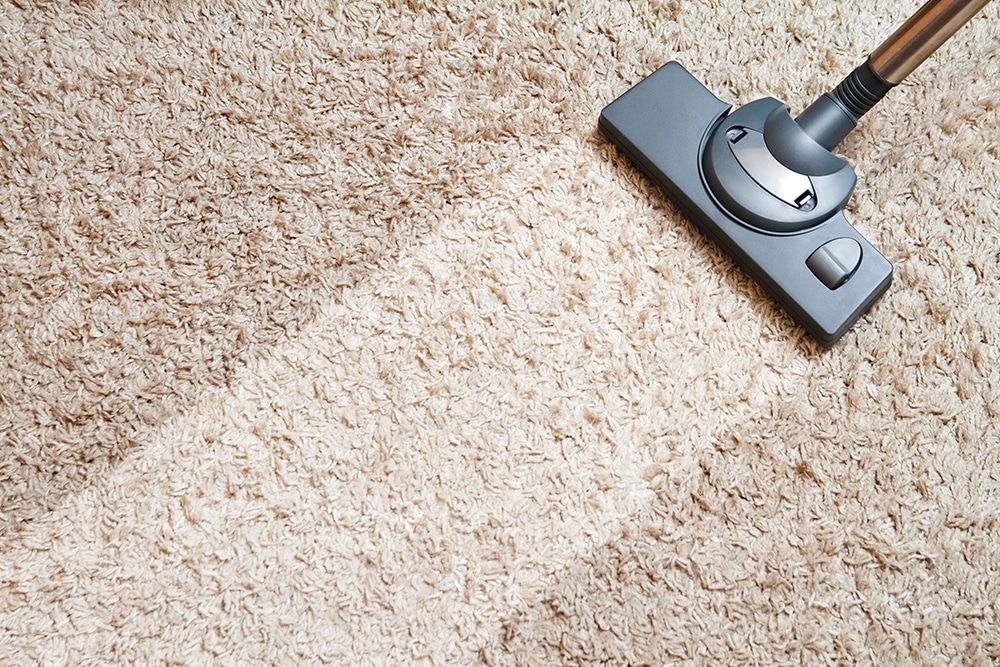Next to bed bugs, dust mites top our list of “gross things we don’t want to think about.” These microscopic, insect-like pests live on our bedding, mattresses, upholstery, carpeting, and curtains, and they feed on the skin cells we shed. If you aren’t so horrified that you can’t continue reading, you should also know that dust mites are a common allergy trigger, especially in those who have asthma or existing allergies to dust mites. So, what can you do about dust mites? Here’s what you need to know about how to reduce your exposure to dust mites in your home — and how we can help.
What You Need To Know About Dust Mites
Dust mite allergies are a reaction to the tiny, common bugs that live in our household dust. Symptoms of dust mite allergy are consistent with most allergy symptoms, including:
• Hay fever
• Sneezing
• Itchy nose
• Runny nose
• Postnasal drip
• Cough
• Facial pressure and pain
• Dark or swollen under-eye circles
More serious symptoms can contribute to asthma such as:
• Wheezing or audible whistling on exhale
• Difficulty breathing
• Chest tightness or pain
• Trouble Sleeping
• Bouts of coughing or wheezing that are worsened by a respiratory virus
If your signs and symptoms are severe, you should call your doctor, as they can lead to complications like sinus infections and asthma attacks.
Top Tips For Reducing Dust Mites In Your Home
1. Use Safer Cleaning Products
Allergies, asthma, and other immunological conditions are triggered by all kinds of things like pollens, molds, and dust mites, but they’re also triggered by harmful chemicals in conventional cleaning products. So, while keeping our homes clean of dust, molds, mildew and outdoor allergens, it’s also important to be doing everything we can to keep our respiratory systems healthy by avoiding toxic chemicals in our cleaning products. Force of Nature is certified 100% skin-safe and best for sensitive skin by SkinSAFE, Mayo Clinic’s allergy rating system. It’s free from skin and respiratory irritants.
2. Dust With A Damp Cloth
Dust mite particles enter our airways when they’re airborne, which is only for a very brief period of time. By spraying a cloth with Force of Nature until damp before dusting or wiping surfaces, you prevent the mite particles from becoming airborne, so there is less of a chance for them to enter your lungs and airways.
3. Mop Floors Often
Using a damp mop to clean hardwood and tile floors is a great way to reduce the amount of dust mites in your home, as it helps reduce the number of dust particles that become airborne and are able to be inhaled and irritate your respiratory system. Carpeting is not recommended for people with allergies, as it can hold on to dust, pollen, and other common allergy triggers. We cover other aspects of why carpeting can be problematic to our health, here.
Force of Nature can be used in the canister of a refillable spray mop to handle all kinds of floor messes while also disinfecting.
4. Use A Dehumidifier
Dust mites thrive in humid environments, so using a bathroom exhaust fan and employing a high-quality dehumidifier can help to reduce the number of dust mites in your home, especially in rooms that tend to have a lot of upholstery like bedrooms and living rooms.
5. Wash and Wipe Down Stuffed Toys and Upholstery
Your child’s beloved teddy is adorable — and also likely a perfect home for dust mites, too. Washing upholstered toys and decor items is preferable, but they’re not always washable. In a pinch, spray them down with Force of Nature and wipe them with a cloth, then let them air dry to remove dust and debris.
6. Clean Bedding Frequently
Cozy bedding provides a great environment for dust mites to thrive, so make sure you are washing it frequently (including decorative coverings which might not seem dirty but can harbor dust) and use allergen-proof mattress and pillow covers when possible.
Force of Nature is a great stain treatment for any stains or marks on your bedding, just make sure to spot test an inconspicuous area first, then spray down the stain and let it air dry before washing.
A Top Allergen-Free Disinfectant
As parents, we know how much thought goes into protecting family members who suffer from allergies and asthma. Cleaning and disinfecting is a powerful defense against common allergy-triggers like dust mites, pollen, mildew, and mold, as well as sickness-causing germs and bacteria. We’re proud to offer a powerful, EPA-registered disinfectant (included on the EPA’s List N as approved for use against SARS-CoV-2) that you can make on-demand in your home. Learn more about Force of Nature, here.




